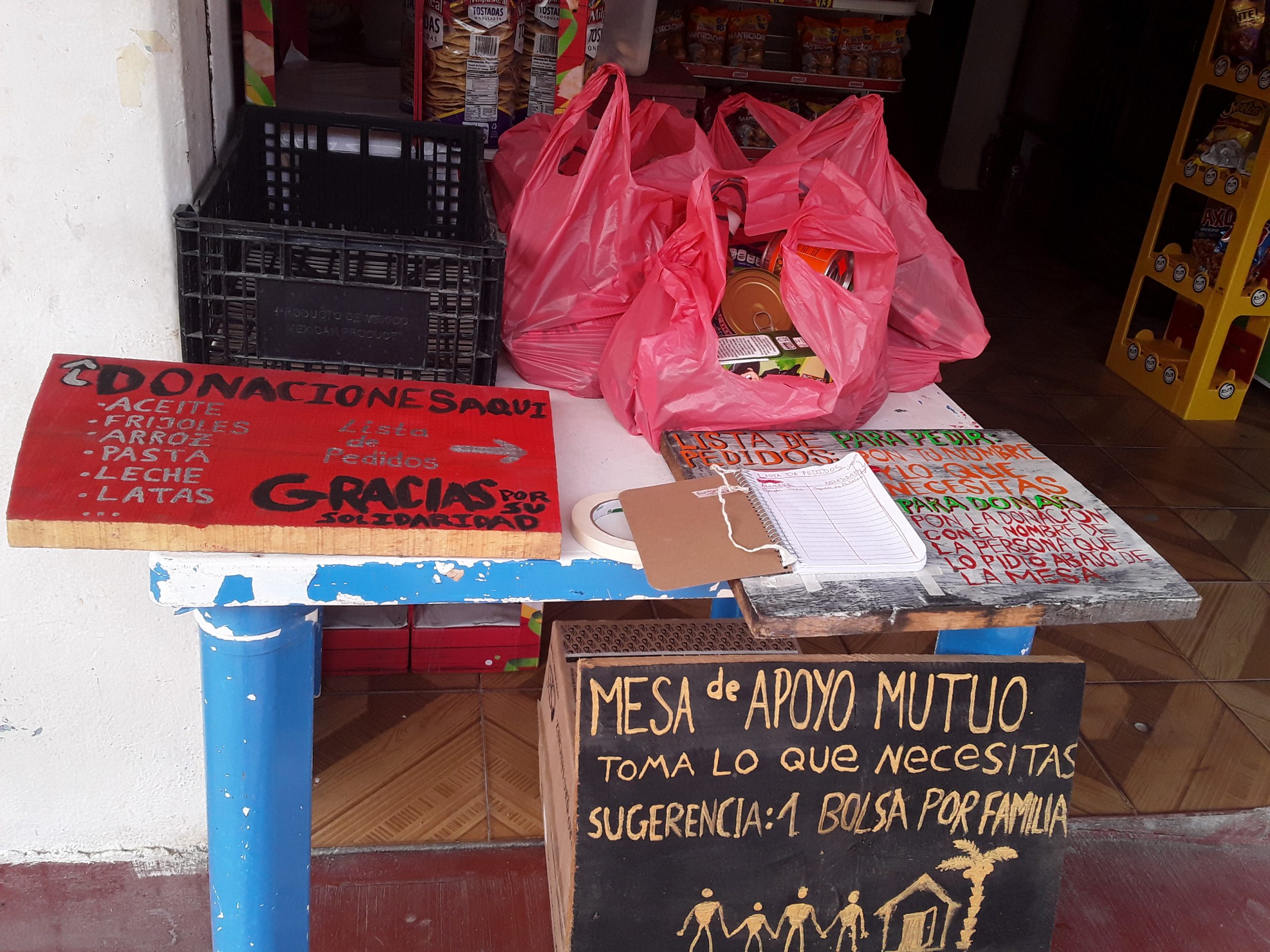Filed under: Action, Anarchist Movement, Disaster, Southern Mexico

A personal reflection of the quarantine in Mexico and the growth of mutual aid projects in response to the COVID-19 pandemic.
I am offering a perspective on the COVID19 crisis from southern Mexico. Here on the Pacific coast of Oaxaca, hundreds of people are quarantined – by choice or by circumstance – in shuttered tourist towns alongside locals and Mexican tourists from all over the country. The response to the virus has been markedly different than the large-scale central or provincial government initiatives and controls seen in Europe, the United States, and Asia. I’m hoping that this description may provide insight into how parts of the Global South will try to deal with the converging crises of the pandemic and economic collapse.
The State is much weaker in Mexico than in the West, and the federal and state governments have mostly just talked so far. At least here in the largely poor and rural South of the country, almost all of the checkpoints, restrictions, closures and quarantines have come at the municipal level, often in response to town assemblies or direct pressure from concerned inhabitants. Relatively speaking, it has been a largely autonomous response to the virus. As early as late March, when there were few to none confirmed cases in the entire state of Oaxaca, isolated villages in the mountains began sealing themselves off in panic. A chaotic network of checkpoints and travel restrictions has popped up since them, despite the virus itself hardly materializing at the time of writing. For example, in the municipality I’m in there have been 2 confirmed cases, and the number hasn’t changed in over a week. Of course, that will probably change quickly soon.
In areas with many tourists and foreigners, a wave of xenophobia has swept through. The tourist towns on the coast quickly developed improvised systems of credential cards that certified where foreigners were staying and a system of checkpoints that didn’t let anyone else in. Each checkpoint is put up and maintained by a certain neighborhood, and each one has its own rules. Some close for the night, others restrict exits from town to once or twice a week, and others let traffic flow by almost freely. They are guarded by a mix of local volunteers and municipal police. Some towns have special restrictions that only apply to foreigners, such as the credential cards or other travel restrictions. In a glimpse of social inversion, coming up to a checkpoint it suddenly becomes a disadvantage to be white. Simmering resentments at the economic inequality inherent in tourism have started to emerge more openly in the social rupture of the crisis.
Other towns have self-quarantined completely, not allowing anyone in or out except for medical emergencies and delivery of essential supplies. There has been significant pushback on closures and travel restrictions from a vocal minority, not surprisingly given how many people live in very economically precarious situations. Many cannot afford to stop working even for a day. A neighboring town began demanding 200 peso fines if locals didn’t show up for their volunteer shift at the nearest checkpoint, and this caused a wave of outrage and complaints. Much of the debate around these issues has shifted to Facebook. The economic crisis threatens to be especially devastating here. The informal economy which accounts for up to half of all economic activity has been deeply affected by the stay-at-home orders, curfews and travel restrictions. The streets are largely empty.
The federal government has recently started denouncing the legality and constitutionality of the checkpoints. They even got a doctor to say that the travel restrictions didn’t help against the virus. It doesn’t seem like the majority of people out here are very interested in what they say. So far, the municipalities have by far the most legitimacy in dealing with the crisis. People generally mistrust the central government. However, in the absence of a large number of cases of COVID19, tensions over the social distancing restrictions are heightening, and many people still doubt the existence of the virus.
Once the virus starts spreading faster and people start to see its effects firsthand, I expect these semi-autonomous restrictions to tighten further, in a haphazard but effective manner. Nobody enforces rules better than your neighbors. It doesn’t seem like the central government has much influence on the situation, though that may be different in large cities. There are also hopeful signs of a wave of mutual aid projects popping up as they have in other countries.





